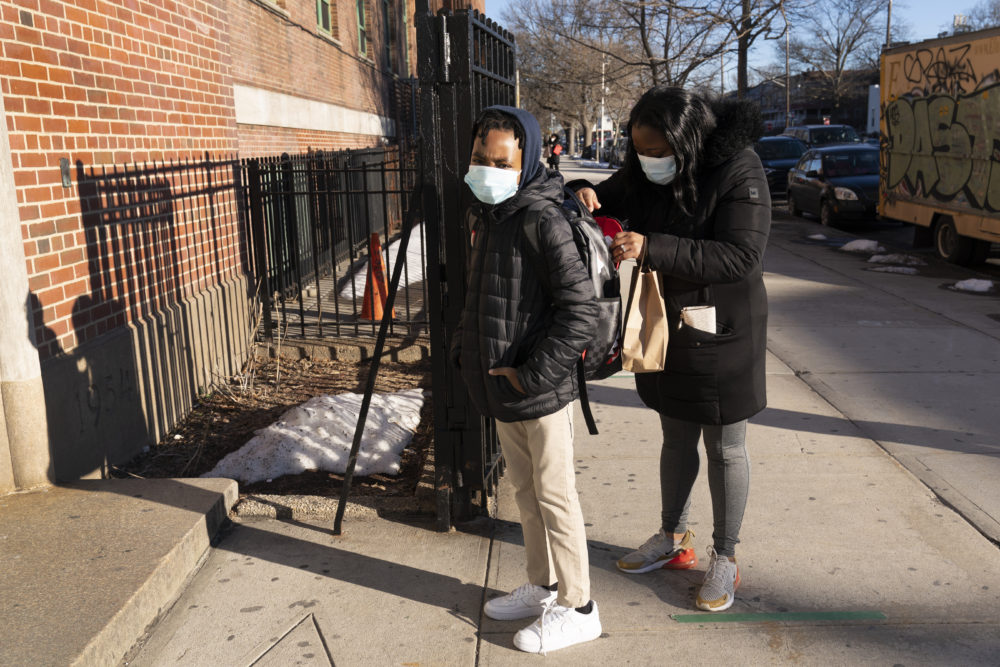Last summer, when it became clear that K-12 schools across Kansas City, Missouri, would have to teach virtually due to the pandemic, Erin Balleine sprung into action to create an out-of-school program so children weren’t left in the lurch.
“If we didn’t come up with a good plan, the consequences of this could be dire,” Balleine, executive director of Camp Fire Heartland, said during a recent webinar hosted by the Afterschool Alliance.
She formed a collaborative team of organizations in the greater Kansas City area to provide a network of community learning hubs serving three school districts and 10 charter schools for what turned out to be the entire school year. The price tag for serving roughly 1,000 kids mostly between the second and fifth grades was $4 million.
 That breaks down to “a hair over $100,000 per week,” said Balleine, adding that while some funding came from the CARES Act, the majority came from private donations.
That breaks down to “a hair over $100,000 per week,” said Balleine, adding that while some funding came from the CARES Act, the majority came from private donations.
Other organizations weren’t so lucky. Nearly three-quarters of programs were forced to close down due to the pandemic. And the programs that were open suffered staffing shortages and rising costs for Covid-19-related cleaning and sanitizing. Inequality in access to programming was exacerbated.
The bright spot in the wake of the pandemic is a windfall of government funding, including the American Rescue Plan’s $500 billion to support young people outside of school hours. This is in addition to a record $1.25 billion in grants made available in the 2020 fiscal year by 21st Century Community Learning Centers, the only federal funding source dedicated to out-of-school and summer learning programs.
Balleine and other advocates, as well as lawmakers, who attended the July 20 webinar discussed the challenges out-of-school programs faced during the pandemic; the barriers preventing families from accessing these programs; and billions of dollars in new federal funding aimed at revitalizing this sector.
“This is a moment that calls for bold and significant investments in afterschool so that families can take advantage of these critical programs and ensure that their children are in good hands,” said David Cicilline, U.S. Representative for Rhode Island and co-chair of the Afterschool Caucuses. “The bottom line is that these programs work, and we should be doing everything we can to replicate them throughout the country.”
For out-of-school time advocates, the data is crystal clear: Summer camps and afterschool programs not only provide safe places for kids to be when they are not in school, they also help kids develop their social and emotional skills.
Across the country, afterschool programs and summer camps struggled to pivot programming and find funds to support kids throughout the evolving circumstances of the pandemic, whether that meant a virtual, hybrid or in-person environment.
“Even as we’re moving towards getting back to a more normal sense of life, afterschool programs and communities across the country are still scrambling from the effects of the pandemic,” the lawmaker said. “If we’re not able to do this, then afterschool programs will be forced to shut down, more kids will be left behind, and recovery will be that much more difficult for families coming out of Covid-19.”
But even with the billions of dollars infused into afterschool programming, the demand far outweighs the supply, advocates say. And the kids and families who suffer the most, as a result, are those from lower-income homes.
“For every child in the summer program, one more was waiting to get in,” said Nikki Yamashiro, vice president of research at the Afterschool Alliance.
According to a survey of roughly 30,000 households conducted by the Afterschool Alliance, 12.6 million kids participated in afterschool programs, but 13.9 million kids were waiting to get in and couldn’t.
“For every child in the summer program, one more was waiting to get in,” said Nikki Yamashiro, vice president of research at the Afterschool Alliance.
The vast majority of those kids who couldn’t access afterschool programs were from lower-income families.
The survey found higher-income families were almost 3 times more likely to have a child in a summer program than low-income families. On top of that, the survey found families in the highest income bracket spend 5 times more on out-of-school activities than families in the lowest income bracket.
The study identified three primary barriers families faced in accessing afterschool programming: program costs, issues with transportation or the location and the lack of awareness of the programs.
To overcome these barriers and build afterschool programs that can sustain themselves for the long term, advocates say, they will need ready access to funding from 21st Century Community Learning Centers and the American Rescue Plan.
With the flush of new funding, Balleine anticipates afterschool grants will be highly competitive. As to programs like hers in Missouri, the funding from the American Rescue Plan has gotten held up at the state level. She anticipates the money won’t be available until early 2022.
Despite the possible delay, she expressed confidence her program can sustain itself until then.
“We’re ready to hit the ground running,” she said. “We know when that funding is available, we’re going to be able to jump right in and meet kids where they are and move them forward.”






























